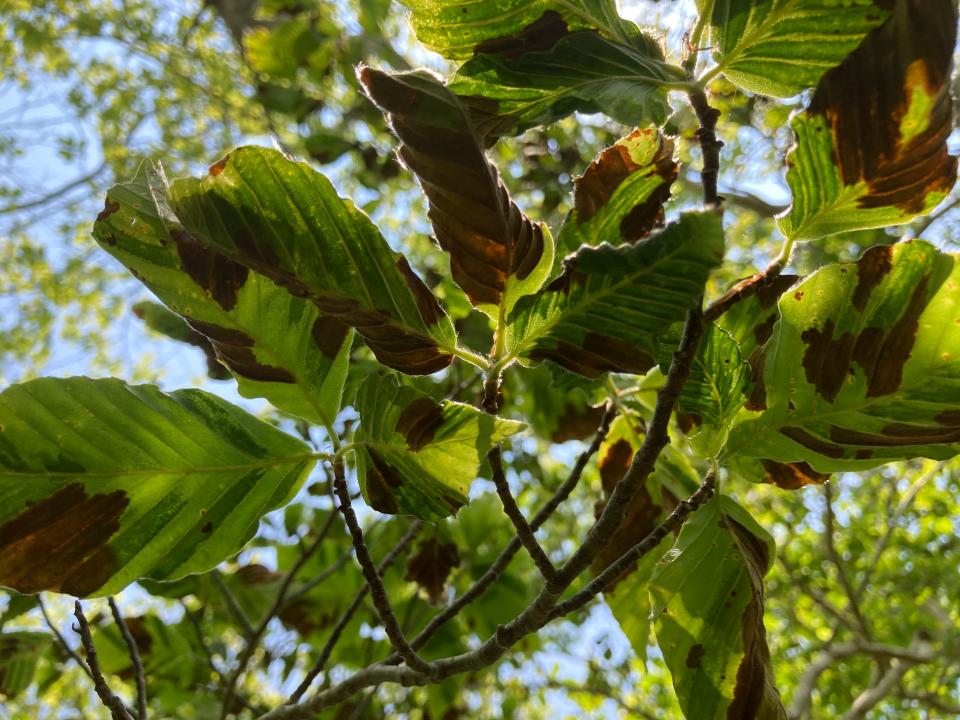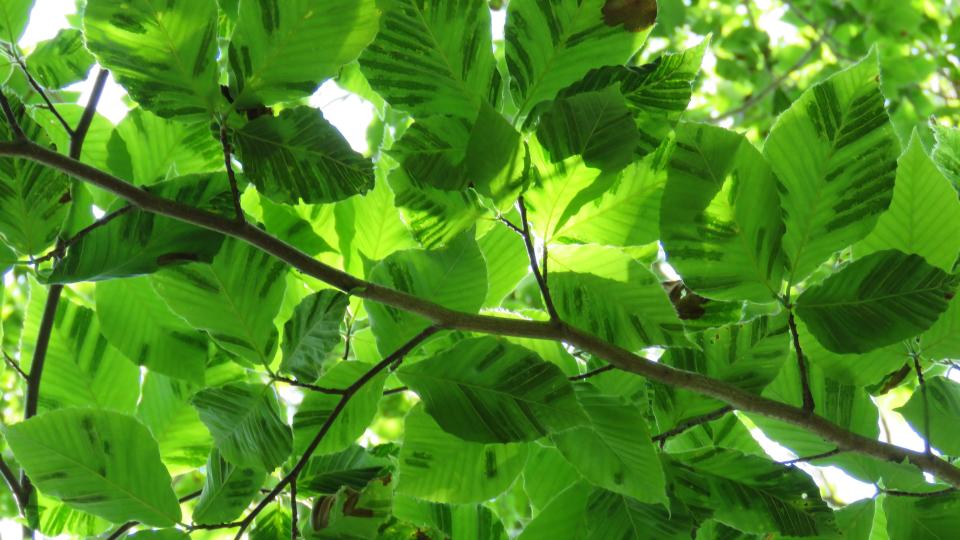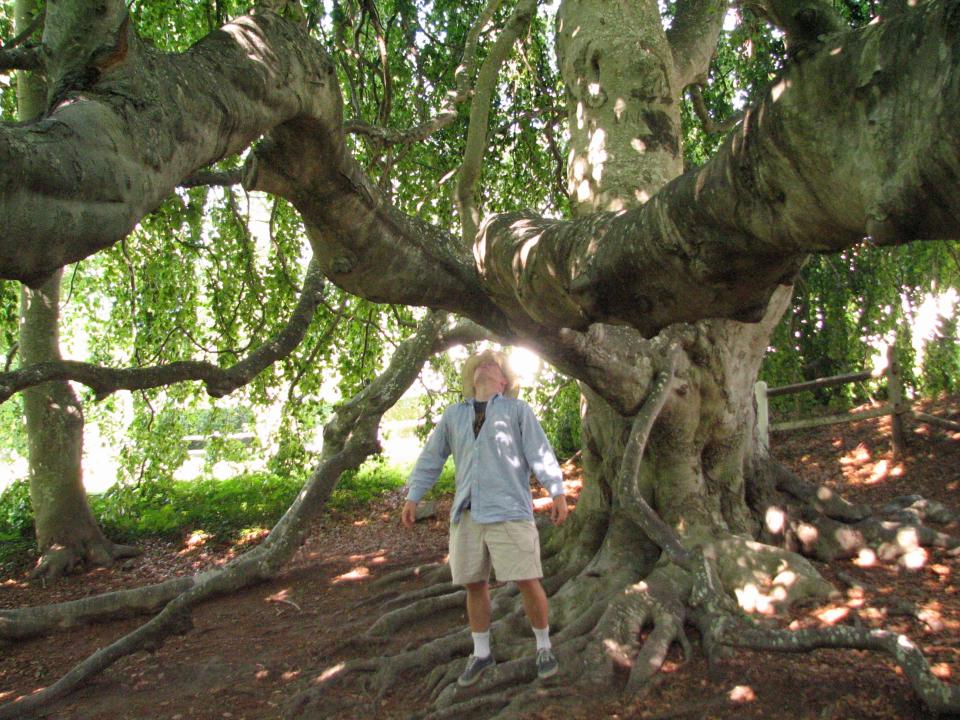Something is happening to Cape Cod's beech trees. What you should know.
It's no day at the beach for beech trees on Cape Cod these days. A malady known as beech leaf disease (BLD), first detected in Ohio in 2012, has made its way to Massachusetts, where it was first seen in Plymouth in 2020, according to the state Bureau of Forest Fire Control and Forestry.
Russell Norton, horticulturist at the Cape Cod Cooperative Extension wrote In an email to the Cape Cod Times, that BLD was confirmed on the Cape in 2022 and is now widespread in Barnstable County.
"From what has been seen already I think there is likely to be some mortality," wrote Norton, adding that it is too soon to know what the full impact of the disease might be.

How does beech leaf disease affect beech trees?
"The disease causes damage to a tree’s leaves, leading to reduced vigor and can eventually lead to tree mortality, according to the state Bureau of Forest Fire Control and Forestry. There are still many unknowns about how the disease is spread, how new trees are infected or how long it takes for symptoms to develop. However, we do know that American beech, European beech and Oriental beech can be infected. Infected trees of all ages and in both urban and forested settings have been observed."
What causes beech leaf disease?
According to the Emerald Ash Borer Network, funded by the United States Department of Agriculture Forest Service, "this new disease complex is associated with a newly discovered nematode. … The nematode, also called a roundworm, causes damage to newly forming leaves inside beech tree leaf buds during the winter."
Penn State Extension describes nematodes this way: "Nematodes are thread-like roundworms that live in a wide range of environments including soil and fresh and salt water. There are species of nematodes that feed on fungi, bacteria, protozoans, other nematodes and plants. They can also parasitize insects, humans and animals."

How can I identify beech leaf disease?
"Beech leaf disease can be identified by the distinctive leaf symptoms it causes," according to the state Bureau of Forest Fire Control and Forestry. Early BLD symptoms will include dark stripes between the veins on leaves. When looking up at the tree canopy from underneath, you might notice dark green bands on the underside of the leaves. As the disease progresses, leaves may become withered, curled, or develop a leathery texture. A heavily impacted tree may appear to have a thinner canopy or have sections of branch dieback."
On a recent trip to the Cape Cod National Seashore's Beech Forest Trail in Provincetown, it was easy to see BLD's effect on the area's signature beech trees. Some exhibited early signs of the disease, with dark green stripes visible on leaves in the canopy. In other instances, the disease has progressed to significant swaths of brown and curled leaves.
"It looked horrendous this spring," Seashore plant ecologist Stephen Smith said. "I suspect what will happen is some of these trees will die."
Is there any treatment available for BLD-affected beech trees?
According to the New York Department of Environmental Conservation, "Currently, there is no known way to control or manage this disease."
But research efforts are underway to fight BLD. Peter Hanlon, an integrated pest management specialist and arborist representative for Bartlett Tree Experts on Cape Cod, said Bartlett's scientists had seen promising results in trials with a nematode-attacking fungicide product.
Hanlon, a big beech tree fan, first saw BLD in Cotuit last year.
"It's upsetting to us to see the trees get this disease," he said.
Hanlon's favorite beech tree on Cape Cod is the spectacular English weeping beech behind the Historical Society of Old Yarmouth in Yarmouth Port. He has visited it several times over recent months and said so far, it appears to be disease free.

Should I report beech leaf disease?
The state is asking folks who observe beech leaf disease to fill out an online form that goes to the state's Forest Health Program. Include as many details as possible, including location, severity of the disease and photos. This will help the Forest Health Program monitor the progress of the disease in Massachusetts.
Eric Williams, when not solving Curious Cape Cod mysteries, writes about a variety of ways to enjoy the Cape, the weather, wildlife and other subjects. Contact him at ewilliams@capecodonline.com. Follow him on Twitter: @capecast.
Thanks to our subscribers, who help make this coverage possible. If you are not a subscriber, please consider supporting quality local journalism with a Cape Cod Times subscription. Here are our subscription plans.
This article originally appeared on Cape Cod Times: Beech trees on Cape Cod threatened by leaf disease

